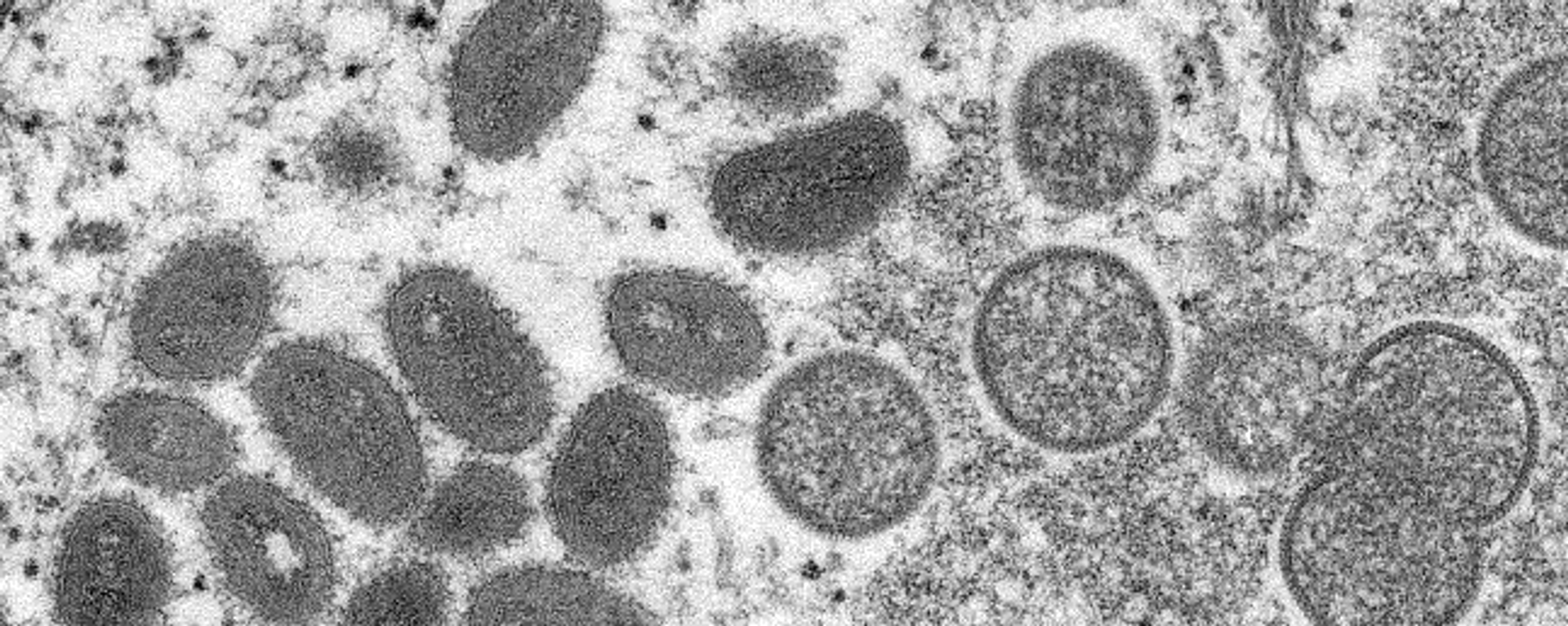https://sputnikglobe.com/20220602/who-at-least-643-cases-of-monkeypox-detected-across-26-non-endemic-states-1095952317.html
WHO: At Least 643 Cases of Monkeypox Detected Across 26 Non-Endemic States
WHO: At Least 643 Cases of Monkeypox Detected Across 26 Non-Endemic States
Sputnik International
ZURICH (Sputnik) - At least 643 monkeypox cases in humans have been registered in 26 non-endemic countries by early June, Emerging Diseases and Zoonoses Lead... 02.06.2022, Sputnik International
2022-06-02T17:33+0000
2022-06-02T17:33+0000
2022-06-02T17:34+0000
monkeypox
world health organization (who)
https://cdn1.img.sputnikglobe.com/img/07e6/05/14/1095674594_0:0:3072:1728_1920x0_80_0_0_33debe9408f18f10d700b008c62e82c6.jpg
At the moment, the overall number of infections ranges from 643 to 650, with numerous suspected cases identified, Van Kerkhove said, adding that these infections were reported from 13 May to 1 June.Monkeypox has been reported in a total of 26 non-endemic countries across four WHO regions, she said, noting that the highest infection rate was observed in the United Kingdom with 190 cases, Spain with 142 cases, Portugal with 119 cases and Germany with 44 cases.According to Van Kerkhove, epidemiologists currently need to assess the risk of spreading monkeypox worldwide, examine the genome of the virus and sequence it to track potential mutations.Hundreds of monkeypox cases have been registered in European countries, Australia, and the United States since early May. Medical officers are still unsure about the ways the infection has spread since monkeypox is endemic in African countries and the majority of those infected have neither had any contact with African people nor travelled there.Monkeypox is a rare viral disease that is usually transmitted to people from wild animals. The disease can be transmitted through body fluids, respiratory droplets, and other contaminated materials. The disease usually results in fever, rash, and swollen lymph nodes.
https://sputnikglobe.com/20220528/who-official-monkeypox-could-be-just-the-tip-of-the-iceberg-1095844773.html
Sputnik International
feedback@sputniknews.com
+74956456601
MIA „Rossiya Segodnya“
2022
Sputnik International
feedback@sputniknews.com
+74956456601
MIA „Rossiya Segodnya“
News
en_EN
Sputnik International
feedback@sputniknews.com
+74956456601
MIA „Rossiya Segodnya“
Sputnik International
feedback@sputniknews.com
+74956456601
MIA „Rossiya Segodnya“
monkeypox, world health organization (who)
monkeypox, world health organization (who)
WHO: At Least 643 Cases of Monkeypox Detected Across 26 Non-Endemic States
17:33 GMT 02.06.2022 (Updated: 17:34 GMT 02.06.2022) ZURICH (Sputnik) - At least 643 monkeypox cases in humans have been registered in 26 non-endemic countries by early June, Emerging Diseases and Zoonoses Lead at the World Health Organisation (WHO) Health Emergencies Programme Maria Van Kerkhove said.
At the moment, the overall number of infections ranges from 643 to 650, with numerous suspected cases identified, Van Kerkhove said, adding that these infections were reported from 13 May to 1 June.
Monkeypox has been reported in a total of 26 non-endemic countries across four WHO regions, she said, noting that the highest infection rate was observed in the United Kingdom with 190 cases, Spain with 142 cases, Portugal with 119 cases and Germany with 44 cases.
According to Van Kerkhove, epidemiologists currently need to assess the risk of spreading monkeypox worldwide, examine the genome of the virus and sequence it to track potential mutations.
Hundreds of monkeypox cases have been registered in European countries, Australia, and the United States since early May. Medical officers are still unsure about the ways the infection has spread since monkeypox is endemic in African countries and the majority of those infected have neither had any contact with African people nor travelled there.
Monkeypox is a rare viral disease that is usually transmitted to people from wild animals. The disease can be transmitted through body fluids, respiratory droplets, and other contaminated materials. The disease usually results in fever, rash, and swollen lymph nodes.


